How to Grow Native Wildflowers—for Beauty, Biodiversity, and Pollinators
A Beginner-Friendly Guide for Every Budget and Any Size Space
You don’t need acres of land to support biodiversity—just a bit of space, some native seeds, and the willingness to let nature lead. In this piece, I share the why and how of planting native wildflowers: how to choose the right species, prepare your space, and recognize what may already be growing on its own. Whether you have a yard, a balcony, or a forgotten strip of sidewalk, there’s a place for wildflowers—and a place for you in this rewilding journey.
This article is part of my ongoing series called Rewilding Your Yard for Wildlife and Biodiversity.
People travel from all over the world to see California’s wildflowers. When the timing is right—after a series of winter storms or during a rare “super bloom”—the hillsides come alive with gold, orange, purple, and blue, and the experience can feel nothing short of magical. But you don’t have to trek to a state park or national preserve to witness this wonder. You can do it at home, wherever you live.
As I’ve been sharing in my series Rewilding Your Yard for Wildlife and Biodiversity, I’ve been steadily “rewilding” different areas of our property: removing invasive non-natives, planting native species, and letting nature lead. One of the most joyful parts of the process has been adding native wildflowers and making space for those already here.
So today, we’re diving into the world of wildflowers: what defines them, how they differ from cultivated “garden” flowers, and why native wildflowers in particular are so vital. We’ll look at why planting a diversity of native species matters—not just for beauty, but for biodiversity, pollinators, and ecological balance.
I’ll share practical tips on how to sow wildflower seeds, how to find species native to your region, and why both annuals and perennials have a place in a vibrant, ever-evolving wildflower garden.
Why (Native) Wildflowers?
Unlike many cultivated garden flowers—like petunias, pansies, impatiens, or hybrid roses—which are often bred for color or shape rather than ecological function, wildflowers are foundational to healthy ecosystems. They support biodiversity by providing food and habitat for native insects, birds, and other wildlife. They feed pollinators—bees, butterflies, moths, beetles—many of whom are in steep decline. Their root systems improve soil structure and water retention. Their presence signals a living, thriving landscape.
And you don’t have to be an expert gardener (at all!) to grow them. Wildflowers—especially those native to your region—are adapted to the local soil, rainfall, and climate. They know the rhythms of the place you live. They have evolved over thousands of years alongside the insects, birds, and animals in your area. These are the plants that support and sustain local ecosystems.
They’re also low-cost, low-maintenance, and low-water once established. Hardy and adaptable, they can thrive in a wide range of conditions. You can sow them in gardens, raised beds, containers, along pathways, or even between stones in a patio or on a wall.
In addition to bringing beauty and joy, they connect us to the rhythms of nature—reminding us to slow down and notice change, growth, and renewal. They invite us to observe and to participate. They’re generous like that.
Ways to Bring Wildflowers into Your Space
There’s no one right way to welcome wildflowers into your garden, your balcony, or your life. You don’t need acres of land or a green thumb—just a little intention and attention. Depending on your space, your climate, and your comfort level, there are a few different ways to bring wildflowers in—and each offers its own set of benefits.
1. Planting Starters: Instant Color, Container-Friendly
While starter plants can be more expensive and often come in plastic pots, they’re a great option for getting started—especially if you’re working with containers or want immediate blooms. In previous years, I filled the planter boxes outside our kitchen with non-native ornamental annuals for quick color. This year, I spent hours researching which native wildflowers would not only add color but also support local pollinators.
The wildflowers that have worked well in our part-sun, part-shade kitchen planters are elegant clarkia, tidy tips, and penstemon. (While not wildflowers, I’ve also included the herb yerba buena and sword ferns — not pictured.) Yes, I’m limiting their growth and spread, but if planters and pots are all you have to work with, it’s better than nothing. The pollinators you’ll be supporting will be grateful for whatever you can provide.
2. Sowing Seeds: More Variety, Deeper Connection
For those looking for a more sustainable, affordable, and ultimately more rewarding approach, sowing wildflower seeds is pure magic. We’ll talk more about how to do this effectively and how to set yourself up for success—with just a bit of planning and patience. (I share my process below!)
3. Making Space for What’s Already There
Sometimes the most meaningful step is simply clearing the way. Many native wildflowers are already trying to grow—only to be outcompeted by invasive non-natives or mistaken for weeds. Removing what doesn’t belong (like panic veldt grass, in my case) allows space for what does. Part of rewilding is recognizing that sometimes we don’t need to add anything at all—we just need to make room.
For example, when I began this rewilding project and committed to removing the invasive weeds throughout our property, I started using the PictureThis app to identify every green thing I saw. The most exciting discovery was realizing that many of the plants I would have pulled up in the past—thinking they were “just weeds”—were actually native wildflowers, already here, voluntarily, thriving without anyone having planted them — plants like California hedgenettle (Stachys bullata), California figwort (Scrophularia californica), and Indian tobacco (Nicotiana quadrivalvis). These aren’t cultivated or flashy, but they belong here. Sadly, that’s often the case with native wildflowers: they’re overlooked, unlabeled, and misunderstood—pulled before they have a chance to bloom. Having left them in March, they started blooming in April, and bees are all over them, especially the hedgenettle.
Before You Sow: Choosing the Right Wildflowers for Your Space
Not all wildflowers are created equal—not in behavior, appearance, or benefit—and choosing the right ones for your region and space is key to success. Native wildflowers (more on how to find those below) are best suited to thrive in the conditions where you live. They’ve evolved in step with your local climate, soils, pollinators, and wildlife, and they’re your best bet for supporting biodiversity and reducing maintenance.
You’ll also want to consider:
Annuals vs. Perennials. Many wildflowers are annuals—ephemerals that bloom quickly and reseed themselves if conditions are right. Others are perennials that return each year, building structure and stability in your garden over time. A mix of both can provide early blooms and long-term beauty.
Site conditions. Pay attention to sunlight, drainage, soil type, weed profligacy, and how much space you have. Some wildflowers need full sun and dry soil. Others tolerate part-shade or clay.
Single species vs. seed mixes. Some gardeners like the simplicity of sowing one species at a time, especially in smaller spaces or for visual impact. Others love the diversity and color of curated seed mixes. You can’t go wrong. Especially if you’re using seeds, which are so economical, you can afford to play with different options and experiment.
Timing and bloom succession. Some wildflowers germinate and bloom early, then fade. Others show up later. For continuous interest and pollinator support, consider staggering your sowing or combining species that bloom at different times.
Reseeding and spread. Some wildflowers reseed themselves generously (hello, elegant clarkia), while others spread underground via rhizomes—like the Matilija poppy (Romneya coulteri), sometimes called the California tree poppy. These showstoppers are vigorous growers and can take over if not managed, but they’re also stunning and beloved by pollinators. We’re lucky to have a beautiful patch growing just beyond our fence in our neighbor’s hillside, and I’m thrilled it’s found its way to our side. I’ll be keeping an eye on it, but for now, I’m actually very happy it’s crossed the fence.

Choosing the Right Seeds: Go Native, Not Just "Wild"
Just because a seed packet is labeled “wildflower mix” doesn’t mean the flowers inside are native to your region—or even beneficial to your local ecosystem. In fact, many commercially available mixes contain non-native species that may look beautiful but can crowd out native plants, fail to support local pollinators, or even become invasive.
If you’re serious about supporting biodiversity and rewilding with intention, the most important thing you can do is choose seeds that are native to your specific region.
How to Find Truly Native Seeds
Start with your local native plant society. Many offer seed sales, planting guides, or curated lists based on your ecoregion. I’m a proud member of the California Native Plant Society, which also comes with perks like discounts at native nurseries. Look for a similar society near you.
Avoid generic wildflower mixes. If a packet includes non-native species like baby's breath or forget-me-nots, it’s likely designed for visual appeal, not ecological health.
Look for seed companies that specialize in native plants. A few trusted sources include:
Prairie Moon Nursery – U.S.-wide
American Meadows – U.S.-wide
SFinBloom.art – U.S.-wide
Native American Seed – U.S.-wide
Stover Seed – U.S.-wide (a trusted partner of Pollinator Partnership, the organization I’m currently earning my Pollinator Steward Certification through)
High Country Gardens – Western U.S.
Larner Seeds – California
Theodore Payne Foundation – California
Florida Wildflower Cooperative – Florida
West Coast Seeds – Canada
Wildflower Favours – UK
Choosing native seeds ensures that your efforts directly support the wildlife and ecosystems where you live. You’re not just adding beauty—you’re restoring balance. Up next, we’ll talk about how to choose what to plant, where to plant it, and how to think strategically about timing, spacing, and biodiversity.
How, When, and Where to Sow Wildflower Seeds
Once you’ve chosen seeds native to your area, the next step is preparing a space where they can thrive. Wildflowers may be low-maintenance once established, but success starts with thoughtful sowing.
Where to Sow
Wildflowers are adaptable and don’t need a lot of space. You can sow them directly in the ground, in raised beds, or in containers. Choose sunny spots whenever possible—most wildflowers thrive with at least a few hours of sunlight. Borders, neglected corners, between stones, or planter boxes all work beautifully.
NOTE: You can be an activist for native plants by scattering seeds in human-disturbed areas like sidewalk strips or curbside hellstrips—but not in natural spaces such as national parks, nature preserves, or post-burn areas. Even with the best of intentions, sowing seeds in the wild can do more harm than good. It risks disrupting delicate, recovering ecosystems, introduces non-local genetics, and undermines native plant recovery.
When to Sow
The best time to sow wildflower seeds depends on where you live. In many regions, the ideal time is just before your rainy season begins—fall in the West, spring in parts of the Midwest and Northeast, and late fall through winter in places like Florida. Seeds need consistent moisture to germinate but not so much that they rot or wash away. If you don’t get reliable rain, just be ready to keep the area lightly watered until the seeds sprout and establish.
Prepare the Soil
Remove any weeds, mulch, or grasses that might block light or compete for resources. You don’t need to dig! Just clear the surface and rake the soil lightly to create good seed-to-soil contact. That contact is critical. Don’t bury the seeds; most wildflower seeds need light to germinate. Just press them into the surface with your hands, a board, or by walking gently over them.
Water Gently and Consistently
After sowing, water the area gently but thoroughly. Keep the soil consistently moist (not soggy) until the seeds germinate. This can take a few days to a few weeks depending on the species, temperature, and conditions.
Discourage Birds (Kindly)
Right after sowing, birds may see your new plot as an all-you-can-eat buffet. Some people lay down lightweight row cover, straw (not hay), or netting to give the seeds a head start. I’ve found that sowing right before a rain helps a lot—wet seeds are less attractive and tend to settle into the soil more quickly.
After they Bloom
This is where a lot of people go wrong: they deadhead or pull up the spent plants. But if you leave them alone, the seed heads will feed birds and potentially reseed themselves for the following year. What looks messy to us is a buffet for wildlife—and the beginning of the next bloom.
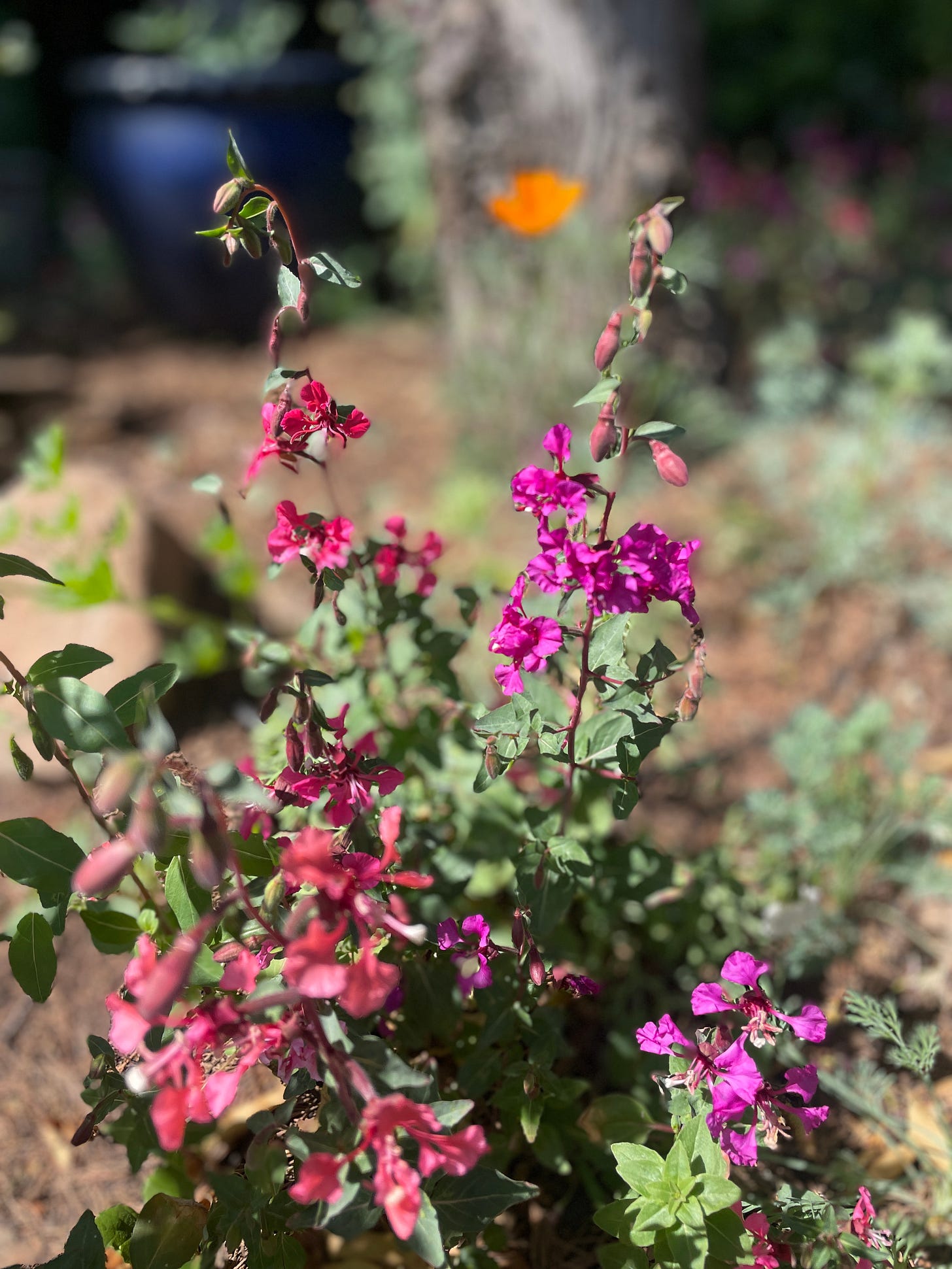
Lessons and Gifts from My First Wildflower Meadow
This year, I sowed native wildflower seeds directly into the ground for the first time. I documented every stage—from preparing the soil to sowing the seeds right before our winter rains, to watching tiny green sprouts emerge. I probably sowed too densely in some spots and too lightly in others, but it was my first time—and it’s all part of the learning. I began with a narrow stretch of our backyard where I’d removed some old stepping stones.

I chose this spot because I can easily water it using water from my rain tanks, it gets enough sun to support growth, and it offers just the right amount of shade—ideal for many of the species I planted.
It’s narrow and not exactly a meadow—but I don’t care. I now lovingly refer to it as my “wildflower meadow.” After keeping it watered and watching it grow for a couple months, soon the blooms came. Then the bees! Watching these wildflowers grow has been nothing short of magical. The sight of pollinators visiting a space that was once bare and lifeless has been the most rewarding gift.
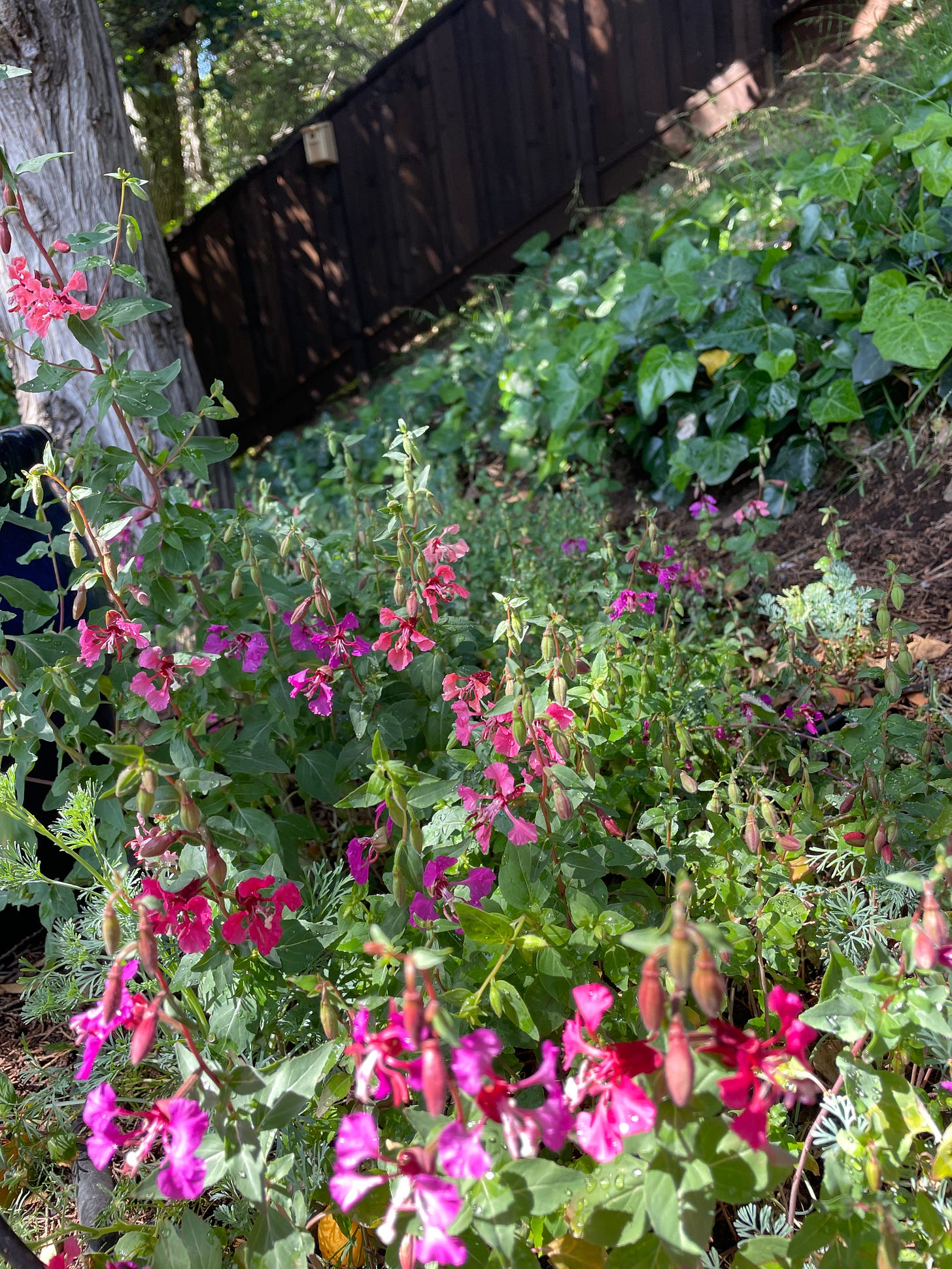
Then I kept going. I sowed seeds in another patch behind our outdoor entertaining area, and even filled an old wooden box that had just been sitting empty. All of it is now brimming with natives.
And now that I’ve seen what’s possible, I have plans to do even more this fall—especially along the sidewalk strip near the street, where I’ll be removing non-native bamboo and mondo grass and replacing them with native wildflowers (and shrubs and trees).
But that’s an article for another day.
Final Thoughts and Tips
Start small. Learn five native wildflowers in your region. Sow them. Watch what happens.
Observe. Note which flowers thrive, what pollinators show up, and how your space changes. Use the iNaturalist app for identifying insects and bees.
Resist the urge to tidy. Let seed heads stand. Let some things go wild.
Leave the leaves. What may look like “yard waste” is often essential habitat—leaf litter provides shelter for overwintering insects, protects the soil, and adds nutrients as it breaks down.
Thanks for reading! I can’t wait to hear about your adventures in wildflowers! Let me know your thoughts and questions below!
This article is part of my ongoing series called Rewilding Your Yard for Wildlife and Biodiversity.
More Resources for You!
👉 Work with me 1:1 – Get personalized guidance whatever you are looking for. (One one-on-one consultation is also a perk of the Founding Member/VIP level here on Substack.)
👉 Read A Year of Compassion – Daily inspiration to help you live with intention, kindness, and clarity
👉 Listen to Food for Thought – Inspiration for living compassionately, sustainably, and healthfully (18 years strong!)
👉 Travel with me! I host animal-friendly, luxury, all-inclusive vegan trips around the world, specifically curated to ensure high-quality, high-touch premium experiences. Check out our upcoming trips, and let me know if you have any questions.
👉 Because the publisher took The Vegan Table (and Color Me Vegan) out of print, I am able to repurpose all of my recipes for which I own the copyright again. Please check out my Recipe E-Books and my library of On-Demand Cooking Classes for more recipes.






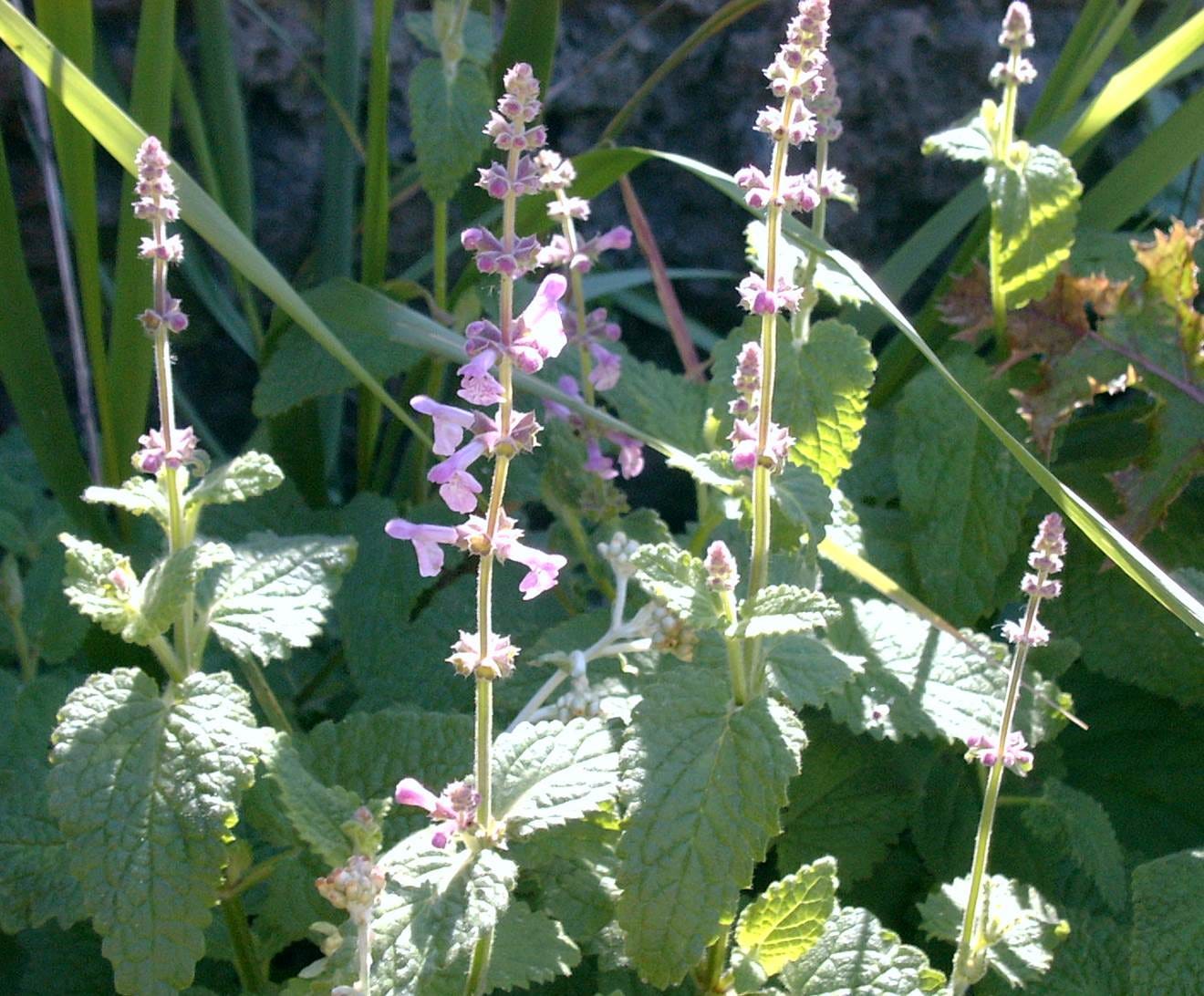
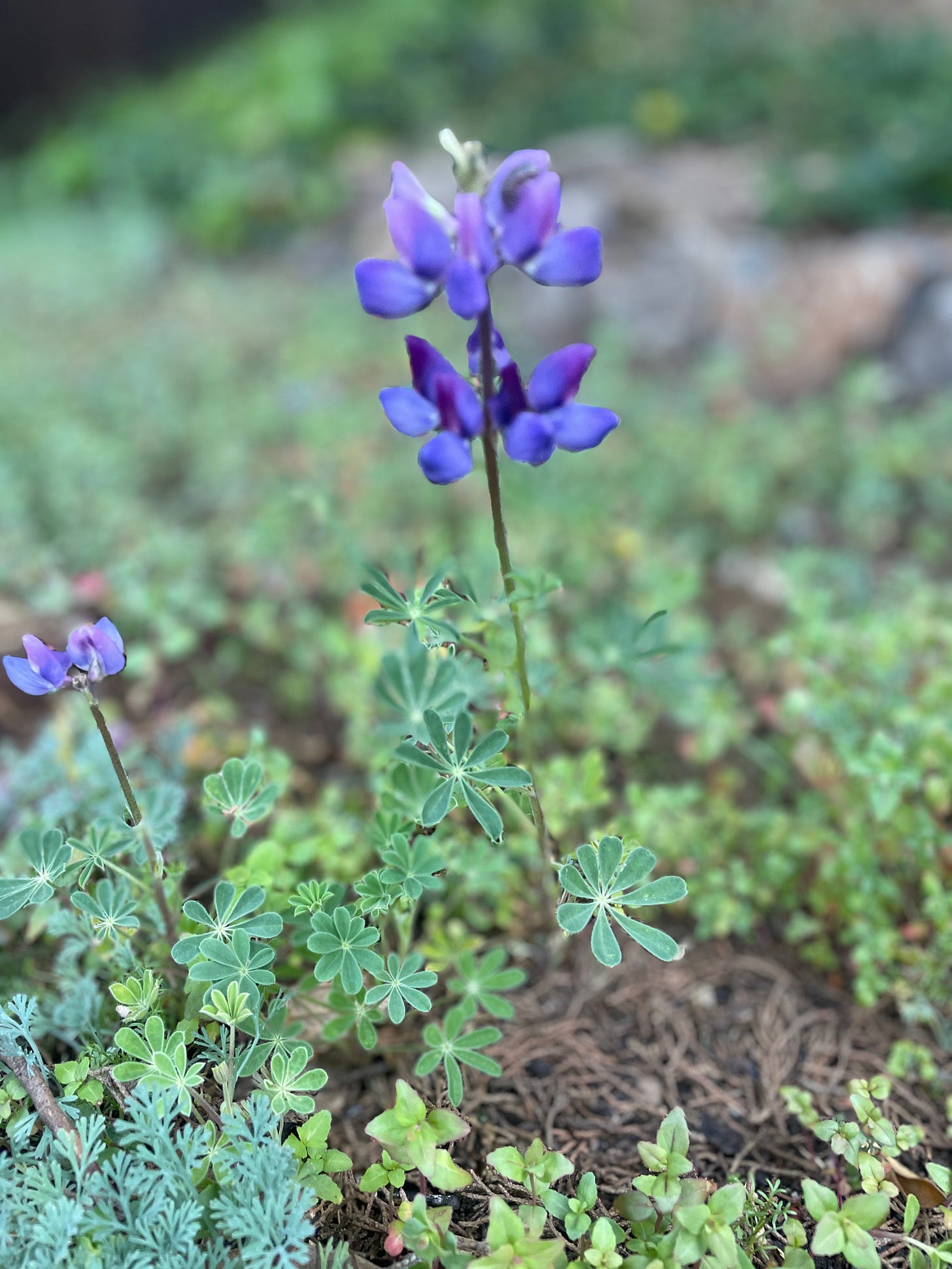
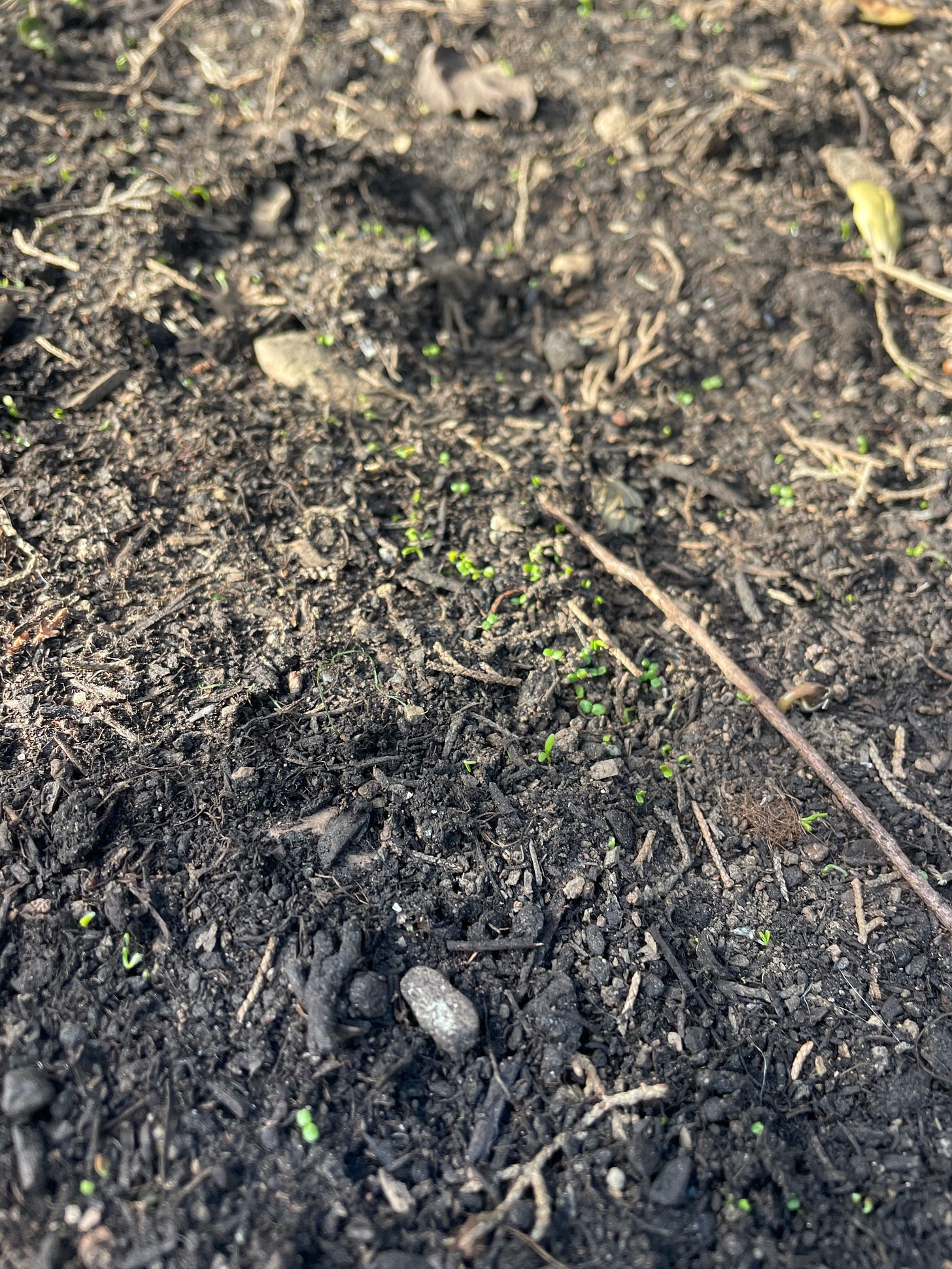
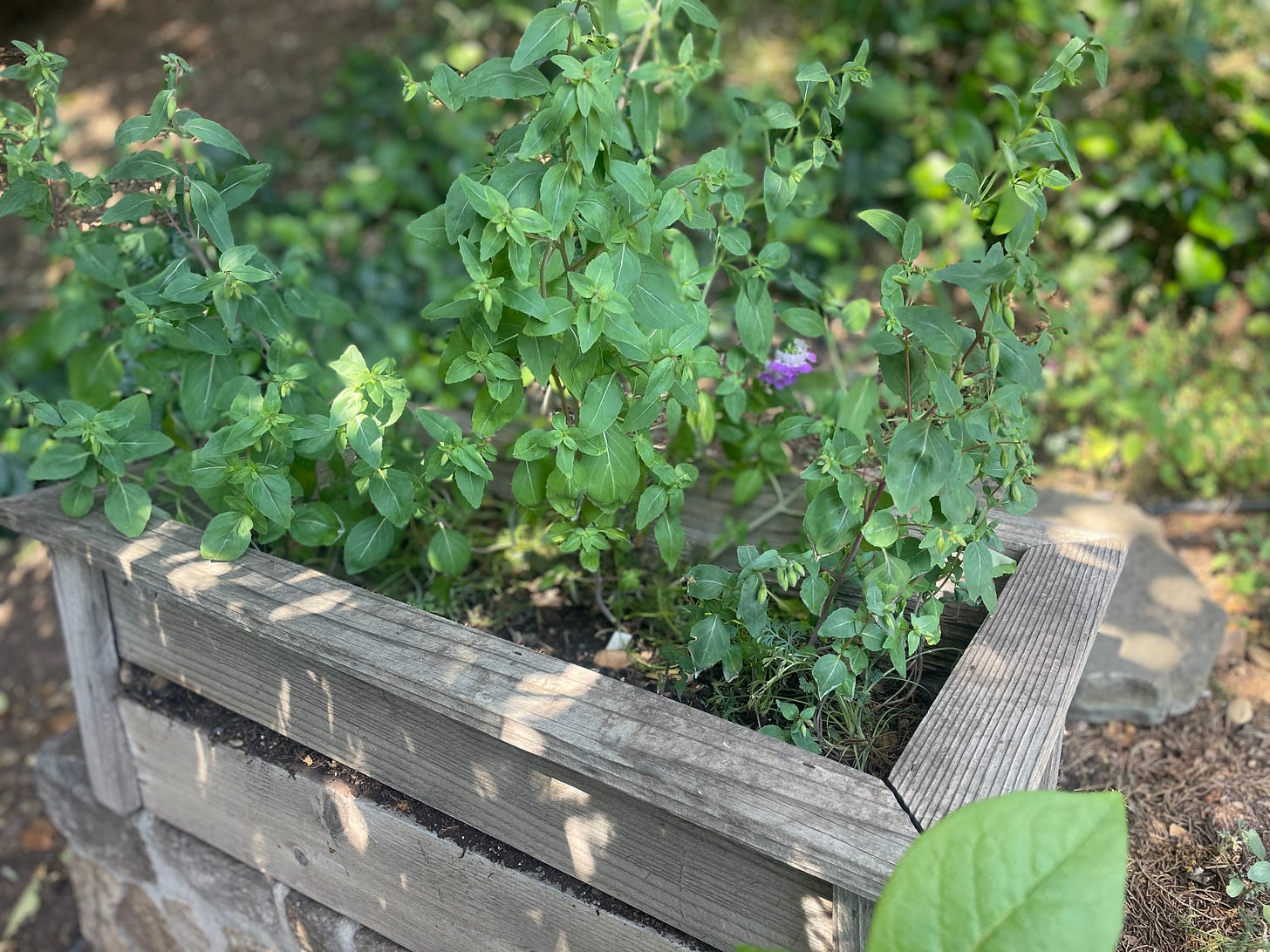
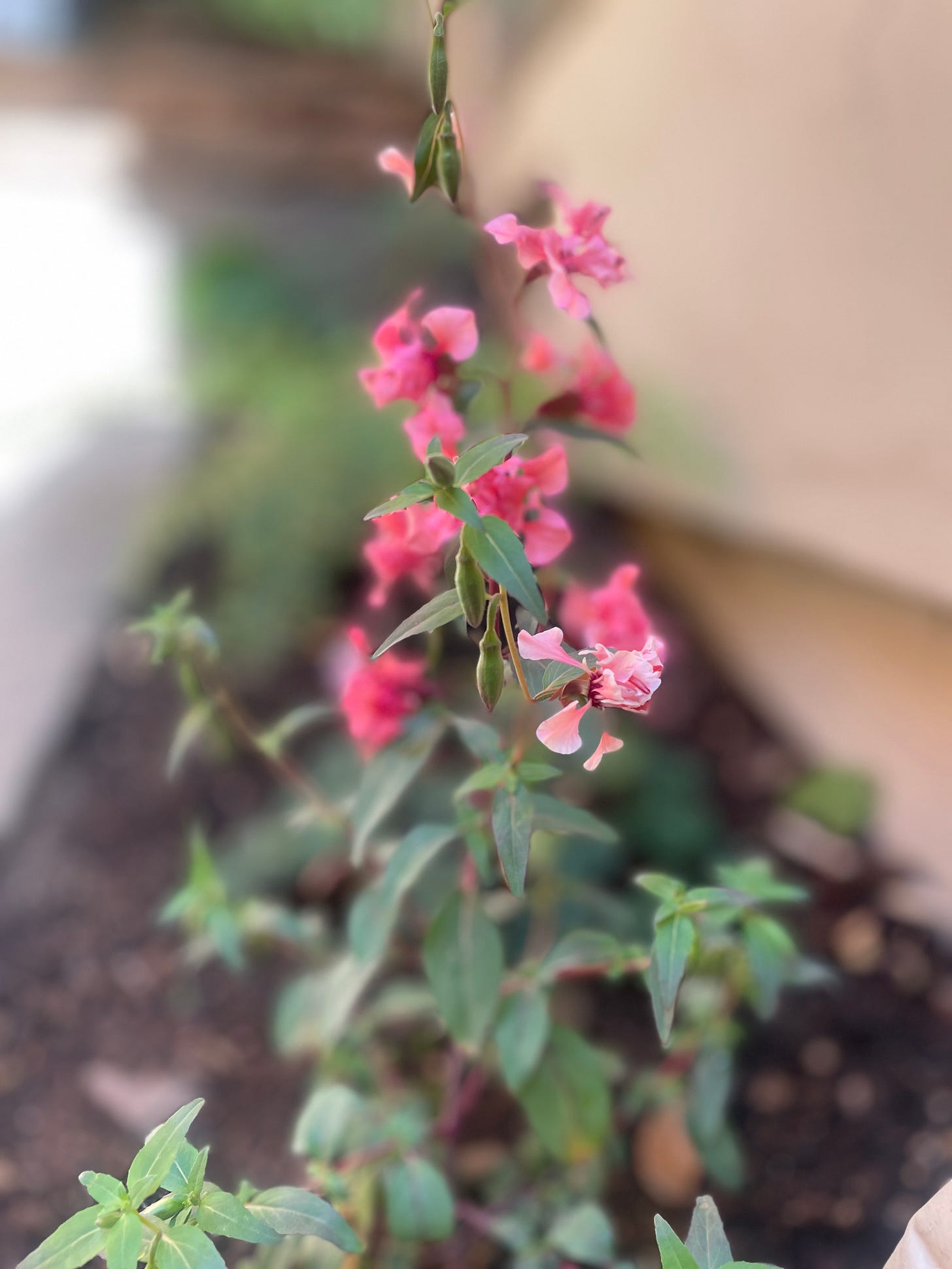
I love your wildflower meadow 😍. I only have pots and containers in our small space . Thanks for the UK link
For the wildflowers - you’ve inspired me to get more natives and flowers which are good for bees 🐝 , instead of what just looks nice . Also I’ll be resisting tidying up ! It’s been in my
Mind for a while but reading this has given me the kick I needed . Thank you 🙏
What an awesome article and list of seed sources! We've really enjoyed upping our native wildflower game as we've taken down bird feeders. I also wanted to recommend Native Seeds Search for anyone in the southwest US. Excellent guidance and seeds for planting natives and they do so much important work to preserve local plants through saving seeds. Lots of locally adapted varieties of food plants for people if you're into that too.
https://www.nativeseeds.org/